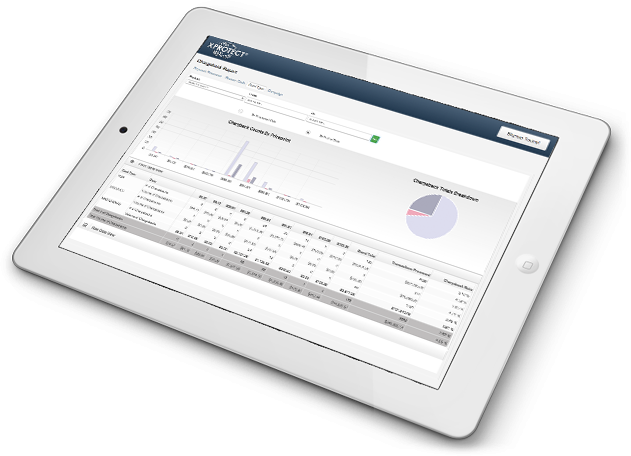Top Strategies to Prevent Fraud and Reduce Chargebacks in E-Commerce

Fraud and chargebacks can significantly erode a company’s revenue, reputation, and customer trust. According to industry data, chargebacks cost merchants billions of dollars every year—not just in lost sales but also in fees, penalties, and operational disruptions. For online businesses, learning top strategies to prevent fraud and reduce chargebacks isn’t optional—it’s essential for long-term success.
In this post, we’ll outline the top strategies e-commerce businesses can implement to safeguard against fraud and minimize chargebacks. From fraud prevention tools to customer service tactics, these actionable tips will help you protect your bottom line and improve customer satisfaction.
Why Fraud and Chargebacks Are Growing Problems in E-Commerce
As online shopping becomes more common, so, too, do fraud attempts. Cybercriminals are continually developing new techniques to exploit weak points in payment systems. At the same time, friendly fraud—when a legitimate customer falsely disputes a charge—remains one of the most difficult types of chargebacks to combat.
Chargebacks can occur for several reasons, including:
- Unauthorized or fraudulent transactions
- Unclear billing descriptors
- Delivery issues or products not received
- Items not as described
- Poor customer service or unresponsive refund processes
The key to reducing chargebacks is proactively addressing both the fraud that leads to unauthorized transactions and the customer dissatisfaction that leads to disputes.
Top Strategies to Prevent Fraud in E-Commerce
1. Use AVS and CVV Verification
The Address Verification System (AVS) and Card Verification Value (CVV) are two of the simplest and most effective fraud prevention tools available. AVS compares the billing address provided by the customer with the one on file with the card issuer, while CVV checks confirm that the buyer has physical access to the card.
Tip: Enable AVS and CVV checks on all transactions to screen out suspicious purchases.
2. Implement 3D Secure (3DS2)
3D Secure 2.0 is an authentication protocol developed by major card networks like Visa and Mastercard. It adds a layer of security by prompting customers to verify their identity during checkout, often through biometrics or a one-time passcode.
Benefits of 3DS2:
- Shifts liability for fraud to the card issuer
- Reduces chargebacks due to unauthorized transactions
- Enhances consumer confidence during checkout
3. Use Real-Time Fraud Detection Tools
Modern fraud prevention platforms use artificial intelligence and machine learning to monitor transactions and flag suspicious behavior. These tools analyze various data points, such as device fingerprinting, geolocation, and transaction velocity, to determine the likelihood of fraud.
Look for a system that:
- Scores risk in real-time
- Automatically blocks high-risk transactions
- Allows you to review or whitelist borderline purchases
Platforms like Kount, Signifyd, and Xcaliber’s XProtect integrate easily with most e-commerce systems.

4. Monitor Unusual Purchase Patterns
Train your team or fraud tools to watch for red flags like:
- High-value orders from new customers
- Multiple orders from the same IP address or email
- Rush shipping requests (often used by fraudsters to receive goods before detection)
- Mismatched billing and shipping addresses
Investigate suspicious orders before fulfillment to prevent product loss and fraud-based chargebacks.
Best Practices to Reduce Chargebacks
Fraud prevention is only half the battle. Many chargebacks are caused by preventable customer issues. Here’s how to avoid them:
5. Set Clear Expectations with Product Descriptions and Photos
Misleading or vague product listings are a major cause of “item not as described” disputes. Use accurate descriptions, include dimensions, and upload multiple high-quality images to ensure customers know what to expect.
Pro Tip: Include a sizing guide, care instructions, and disclaimers when relevant (e.g., “colors may vary slightly due to monitor settings”).
6. Improve Order Fulfillment and Tracking
Late deliveries or lost packages often result in “merchandise not received” chargebacks. To avoid these disputes:
- Use reliable shipping carriers
- Provide tracking numbers immediately after fulfillment
- Offer delivery confirmation and require signatures on high-value orders
If there are delays, communicate proactively with your customer and offer alternatives or refunds before they escalate the issue with their bank.
7. Make Your Billing Descriptor Recognizable
One of the most preventable causes of chargebacks is an unrecognizable billing name on a customer’s credit card statement. Make sure your descriptor reflects your brand name or website.
For example:
Bad: “XYZ MKT INC 4932”
Better: “ShopGadgetPro.com – Online Orders”
8. Offer Hassle-Free Refund and Return Policies
When customers feel they can’t get a refund through the merchant, they often go straight to their bank. You can reduce this risk by:
- Making your return policy visible and easy to understand
- Offering multiple support channels (live chat, email, phone)
- Responding quickly to refund requests or complaints
Empower your customer service team to issue refunds or replacements without delay to prevent unnecessary disputes.
9. Monitor and Analyze Chargeback Data
Understanding why chargebacks happen is the first step toward reducing them. Use your e-commerce platform or chargeback management software to track:
- Chargeback reason codes
- Timeframes of disputes
- Repeat offenders
- Product or service categories with high dispute rates
This data helps you identify patterns and proactively fix issues before they become costly.
10. Use Chargeback Management Software
When manual processes become overwhelming or ineffective, it’s time to consider automation. Chargeback management software, like Xcaliber’s XProtect, helps e-commerce businesses:
- Receive real-time chargeback alerts
- Automatically gather and submit evidence to dispute claims
- Integrate with platforms like Ethoca, Verifi, and RDR to prevent chargebacks before they’re filed
By automating the dispute process and providing valuable analytics, chargeback management tools can recover lost revenue and keep your chargeback ratio under control.
Final Thoughts
E-commerce fraud and chargebacks are not going away—but with the right strategies, you can keep them from undermining your business. By combining strong fraud prevention tools with proactive customer service practices, you can reduce disputes, retain more revenue, and improve the shopping experience.
From implementing AVS and CVV checks to using chargeback management software, every step you take to prevent fraud and reduce chargebacks strengthens your business’s foundation.
Need help protecting your store?
Xcaliber Solutions offers advanced tools and expert guidance to help e-commerce businesses fight fraud, manage chargebacks, and grow with confidence.
Contact us today for a demo of XProtect and take control of your chargebacks before they take control of your profits.

